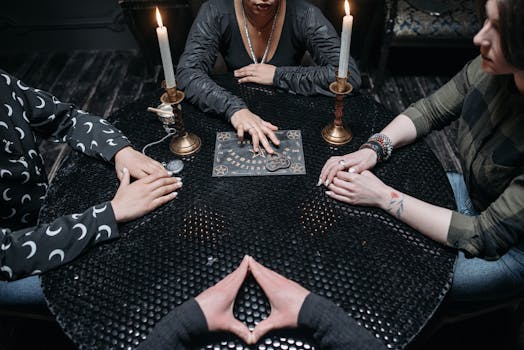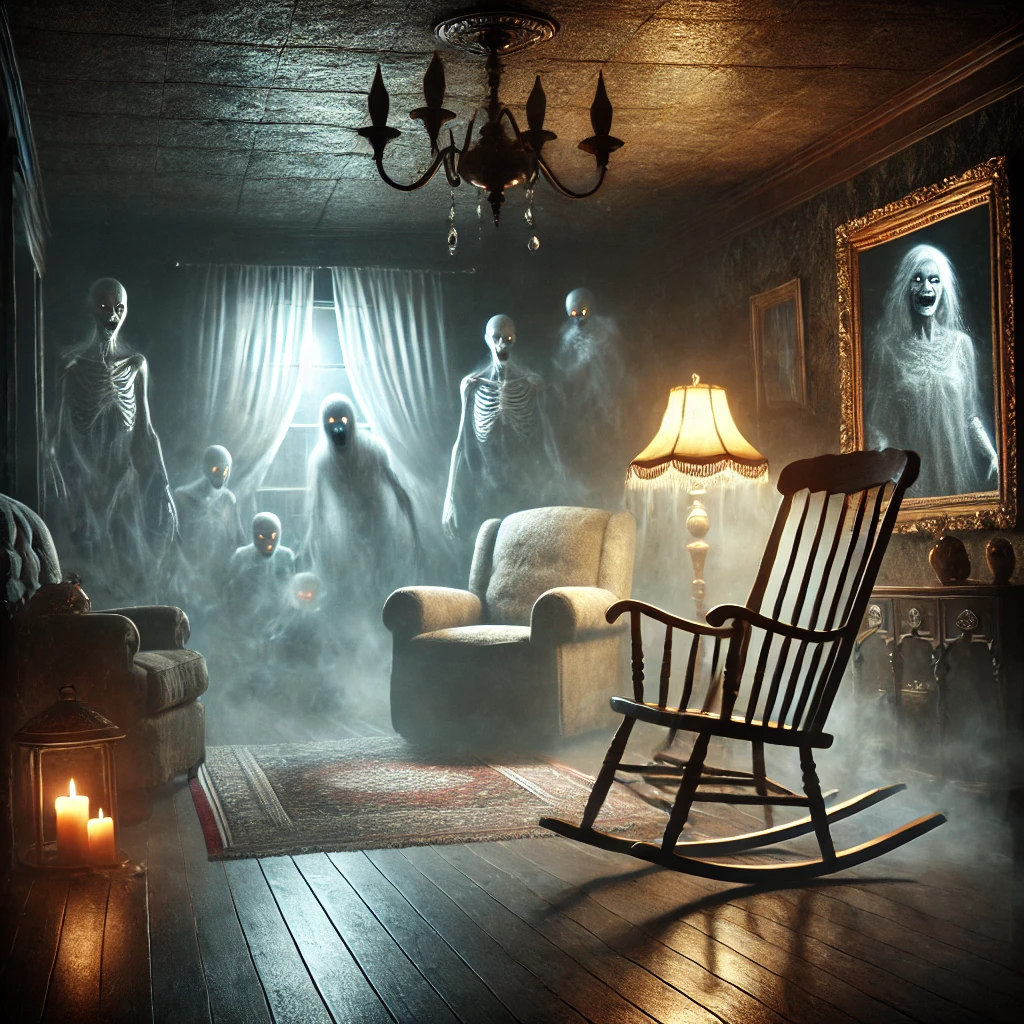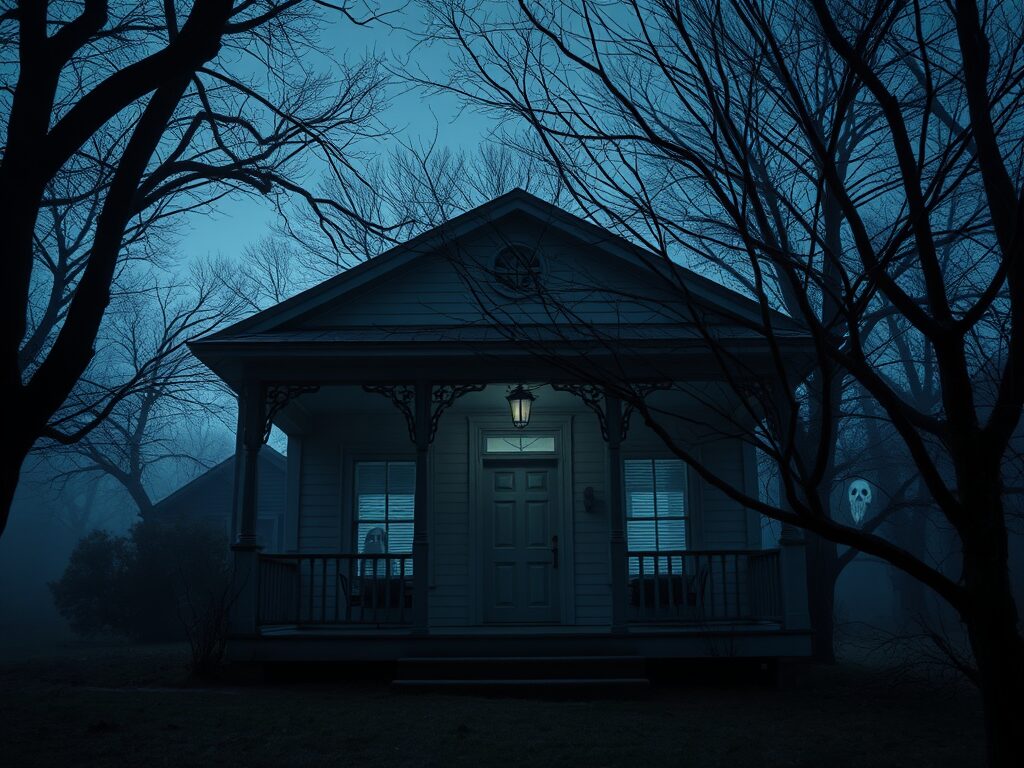
Contents
- Introduction to Debunking vs Proving Hauntings
- Paranormal Investigators Guide: Debunking vs Proving Hauntings
- Introduction to Debunking vs Proving Hauntings
- Understanding the Role of Debunking in Paranormal Investigation
- The Process of Debunking Step by Step
- When Debunking Fails and Something Truly Unusual Remains
- How to Prove a Haunting
- Types of Evidence Used to Prove Hauntings
- Steps for Proving Authentic Paranormal Activity
- Balancing Skepticism and Curiosity
- Final Thoughts and Conclusion
- Frequently Asked Questions About Debunking vs Proving Hauntings
- Important References and Research Sources for Paranormal Investigation
Introduction to Debunking vs Proving Hauntings
Learn the difference between debunking and proving hauntings in this detailed paranormal investigators guide. Understand how evidence is verified, how false positives happen, and how real supernatural activity is documented with expert methods and tools.
Paranormal investigation has grown into a serious field with structured methods and real expectations. Many people enter a haunted location ready to confirm ghost activity, but the truth is that solid evidence requires patience.
This guide on debunking vs proving hauntings helps you understand how investigators think and how they separate natural explanations from real paranormal signs. Every investigation must begin with an open mind, clear observation, and a willingness to question every noise and shadow.
Debunking plays a major role in every paranormal case. Investigators start by looking for the simplest and most natural causes behind strange events. Loose vents, settling wood, faulty wiring, and environmental factors often explain what people first assume is a haunting.
When you learn how to debunk activity the right way, you build stronger credibility. You also start to see how many false positives appear during a typical investigation. This guide helps you develop a balanced mindset so you can approach each case with honesty and clarity.
Proving hauntings requires a different mindset, but it still depends on critical thinking. An investigator must collect clear evidence that cannot be explained by natural means. EVPs, EMF spikes, personal experiences, and captured anomalies become stronger when backed by proper documentation.
This introduction prepares you to understand both sides of the process. Debunking vs proving hauntings is a core part of paranormal research and every investigator must master both to build trustworthy findings.
Paranormal Investigators Guide: Debunking vs Proving Hauntings
A complete guide that shows investigators how to separate natural explanations from real supernatural evidence with clear methods and practical steps.
Introduction to Debunking vs Proving Hauntings
Paranormal investigation invites you into a world where curiosity meets careful observation. Many investigators enter a location with excitement, ready to uncover the unknown, but the real work begins long before you step into a dark hallway.
You must learn how to separate natural causes from true paranormal signs. This article guides you through debunking vs proving hauntings using clear steps, long detailed explanations, and real investigative methods.
You will learn how to approach each case with a balanced mindset and a professional attitude.
Most haunted places come with powerful stories. You may hear old legends, emotional experiences, or dramatic claims from people who lived there. These stories create expectations. The investigator must stay grounded and patient during the process.
You must learn how to research, observe, and question strange events with a steady approach. This guide helps you understand every step that separates a false alarm from strong evidence. When you learn the foundation of debunking vs proving hauntings, you begin to see how credible investigations work.
This article provides detailed steps, expert techniques, and storytelling moments that help you understand the work behind a professional investigation. You will learn how to analyze sound, examine visual anomalies, check environmental factors, document findings, and remain objective.
With each section, you gain the knowledge you need to become a trustworthy investigator with a strong method and a confident voice.
Understanding the Role of Debunking in Paranormal Investigation
Debunking is the first responsibility of any paranormal investigator. It helps you remove natural causes that may look supernatural at first. Many people mistake shadows, temperature changes, or house noises for ghosts.
When you learn how to debunk each event, you build stronger credibility and trust with your audience. You also learn how many strange moments are simply environmental or mechanical.
Debunking requires patience and repetition. You must test each possible explanation before you accept that an event might be paranormal. This helps you avoid false positives and protects the integrity of your investigation.
Why Debunking Matters
Debunking matters because it helps create a clear standard for evidence. Without debunking, any noise or shadow could be labeled as a haunting. This becomes misleading and harms the entire field. Investigators who skip debunking often produce unreliable results.
Debunking provides a foundation for truth. It allows you to filter out mistakes and inconsistencies. This gives you a cleaner slate to work from when reviewing real activity.
Common Natural Explanations for Paranormal Claims
Many events that appear paranormal have simple causes. You must learn how each one behaves so you can test them quickly during an investigation.
Some common explanations include:
- Airflow problems
Loose vents or open cracks create moving air. This may cause doors to open slightly, curtains to move, or cold spots to form. Many people mistake these effects for ghost activity. You must trace airflow sources carefully. - Electrical issues
Faulty wiring creates EMF spikes, flickering lights, and unusual sensations. High EMF can cause headaches, uneasiness, and the feeling of being watched. Investigators often confuse this with paranormal presence. A proper EMF baseline test prevents this mistake. - Animal movement
Small animals, such as mice or raccoons, create tapping sounds, footsteps, and shifting objects. Many haunted buildings sit empty, which invites wildlife. Always inspect walls, attics, and basements for animal activity. - Structural settling
Old houses shift as temperature and humidity change. Floors creak, walls pop, and furniture vibrates lightly. These sounds often appear during quiet moments, which leads many to assume ghost activity. - Environmental reflections
Car lights, phone screens, and reflective surfaces may create odd flashes or moving light patterns. These can appear as orbs or ghost lights. You must test lighting conditions thoroughly.
By understanding these natural causes, you reduce the chance of misinterpreting everyday events as something supernatural.
The Process of Debunking Step by Step
Debunking becomes easier when you follow a systematic process. Each step helps you stay organized, focused, and objective. These steps apply to any location, any claim, and any possible haunting.
Step 1. Gather Background Information
Start by listening to the witnesses. Ask them to explain what they saw, heard, or felt. Pay attention to details and patterns. Take notes about the time of day, the location of the event, and the emotional state of the witness. These details often reveal natural explanations.
Step 2. Recreate the Environment
Revisit the scene under the same conditions. Use the same lighting level, time of day, and weather patterns. Turn on the same appliances or lights if needed. Many events can be recreated when you match the original environment.
Step 3. Test Every Physical Element
Check doors, windows, pipes, vents, and floorboards. Pull on furniture, open cabinets, tap walls, and examine structural features. This helps you find mechanical causes behind strange events.
Step 4. Conduct Baseline Readings
Take baseline readings of EMF, temperature, and humidity. This shows you the normal levels of the environment. You can compare this to any unusual readings later during the investigation.
Step 5. Attempt Controlled Experiments
Try to recreate the reported event. If the witness heard footsteps, walk across the same floor and record how it sounds. If lights flickered, test the wiring and outlets. If shadows appeared, recreate light sources and angles.
Step 6. Review Evidence Without Bias
Look at your notes, readings, recordings, and tests. Compare everything carefully. If you find a natural explanation, document it. If not, mark the event as unexplained and move to the next phase of the investigation.
When Debunking Fails and Something Truly Unusual Remains
Sometimes, even after careful testing and observation, you cannot explain an event. This is where the real excitement begins. You may have captured something that does not behave like a normal environmental element.
These moments require close attention. You must continue documenting everything with clarity and precision. Strong paranormal evidence often begins as an unexplained event that passes every debunking test.
Common unexplained events include:
- A detailed EVP with a clear voice
- A shadow figure moving with intention
- Objects shifting without airflow or vibration
- Sudden temperature drops in isolated spots
- Consistent responses through devices like REM pods or motion sensors
When an unexplained event occurs multiple times, under controlled conditions, it becomes a strong candidate for paranormal activity.
How to Prove a Haunting
Proving a haunting requires evidence that holds up under scrutiny. You must collect clear, consistent, and well documented activity. This means you cannot rely on feelings or vague sensations. You need physical proof.
The Foundation of Evidence Based Investigation
To prove a haunting, you must gather evidence that cannot be explained by natural causes. This includes visual evidence, audio recordings, sensor readings, and physical interactions.
The goal is to find patterns that repeat and align with intelligent behavior. Consistency builds credibility.
Types of Evidence Used to Prove Hauntings
EVP Recordings
Electronic voice phenomena are some of the most common forms of ghost evidence. Investigators record audio in quiet rooms and listen for responses. Clear words, direct answers, or emotional tones make strong evidence.
EMF Readings
Strong EMF spikes without electrical sources may indicate paranormal presence. Consistent spikes that respond to questions provide even stronger proof.
Temperature Changes
Sudden drops in temperature that occur in isolated areas may signal paranormal energy. If the drop repeats during interaction sessions, it becomes more credible.
Visual Evidence
Cameras capture shadows, anomalies, moving objects, and unexplained lights. Infrared or full spectrum cameras often reveal what is not visible to the naked eye.
Interactive Responses
Tools such as REM pods, motion sensors, and spirit boxes may react during questions. Repeated, meaningful responses add to the evidence.
Steps for Proving Authentic Paranormal Activity
These steps help you collect credible evidence in a professional and organized way.
Step 1. Document the Environment Thoroughly
Take photos, videos, and notes before the investigation begins. Record the layout and lighting conditions. This prevents confusion later when reviewing evidence.
Step 2. Use Multiple Devices at the Same Time
Set up audio recorders, cameras, temperature probes, and EMF meters in different corners. When multiple devices capture the same moment, it adds strength to the evidence.
Step 3. Ask Direct Questions During EVP Sessions
Speak clearly. Allow quiet gaps between questions. Review the audio afterward and note any intelligent responses.
Step 4. Record All Unusual Activity in Real Time
Keep a written log. Note the time, location, device readings, and witness observations. Consistent logs help prove that events happened as described.
Step 5. Compare All Evidence for Patterns
Look for similarities across different recordings. A shadow captured on one camera may pair with an EMF spike or EVP response. Patterns create strong support for paranormal claims.
Step 6. Present the Evidence Clearly
Organize everything into a final report. Include timestamps, device readings, photos, and audio clips. Present the findings without exaggeration. A clear and honest report builds trust.
Balancing Skepticism and Curiosity
The best investigators move between skepticism and curiosity. They question everything, yet remain open to the unknown. You must avoid jumping to conclusions. You must also avoid denying every strange event.
A balanced mindset helps you find the truth. It allows you to investigate with confidence, integrity, and a sense of wonder.
Always be honest as a paranormal investigator.
Final Thoughts and Conclusion
Debunking vs proving hauntings is the heart of paranormal investigation. Every case begins with questions, testing, and honest analysis. When you debunk events, you remove noise and distraction. When you prove events, you uncover real moments of supernatural activity.
You now understand how to approach haunted locations with a professional attitude. You know how to test natural causes, document findings, recreate events, and collect meaningful evidence. You also know how to build strong cases that stand up to scrutiny.
Paranormal investigation is not only about finding ghosts. It is about discovering truth. It is about respecting the stories of people who experienced the unexplained. It is about using curiosity, science, and observation to uncover what remains hidden.
As you continue your work, stay patient, stay open minded, and stay grounded. The strongest investigators are the ones who search for truth with compassion, respect, and a steady sense of purpose.
Frequently Asked Questions About Debunking vs Proving Hauntings
What is the difference between debunking and proving a haunting?
Debunking focuses on finding natural causes for strange events, while proving a haunting requires collecting evidence that cannot be explained by normal environmental factors. Investigators debunk first, then evaluate what remains as potential paranormal activity.
Why do paranormal investigators debunk claims before calling something a haunting?
Investigators debunk first because most reported activity has natural or environmental explanations. Debunking protects the credibility of the investigation and ensures that only genuine unexplained events are considered paranormal.
What counts as real evidence of a haunting?
Real evidence includes clear EVPs, visual anomalies, intelligent responses on devices, unusual EMF spikes without electrical sources, and temperature drops that repeat under controlled conditions. Strong evidence must be documented and verified.
How do investigators decide if an event is paranormal?
Investigators decide by testing every natural explanation first. If an event cannot be recreated, explained, or linked to environmental causes, and if multiple devices capture the same moment, it may be considered paranormal.
Can environmental issues cause false paranormal activity?
Yes. High EMF fields, airflow changes, wildlife, structural settling, and reflections often create activity that appears supernatural. These must be tested and ruled out before considering a paranormal explanation.
Why is documentation important in paranormal investigations?
Documentation creates a clear record of everything that happened during an investigation. It helps verify claims, connect patterns, and support evidence. Good documentation strengthens the final case report.
What tools do investigators use to prove hauntings?
Common tools include EMF meters, digital voice recorders, thermal cameras, infrared cameras, REM pods, temperature gauges, and motion sensors. Using multiple tools at the same time improves the quality of evidence.
What makes an EVP strong evidence of paranormal activity?
An EVP becomes strong evidence when it responds directly to a question, contains clear words or emotional tone, and cannot be linked to outside noise. Consistency across multiple recordings also strengthens the claim.
How do investigators stay objective during a haunting investigation?
Investigators stay objective by following a strict method, testing every natural explanation, using baseline readings, reviewing all data without assumptions, and verifying results with multiple devices or witnesses.
Can a haunting be proven scientifically?
Not fully. Paranormal activity has not been scientifically proven in a universal way, but investigators can present strong, credible evidence that suggests intelligent behavior that does not match known natural causes.
Important References and Research Sources for Paranormal Investigation
Here are three high quality, relevant website references you can place in a References or More Resources section:
Related Website References
- The Atlantic Paranormal Society
https://www.the-atlantic-paranormal-society.com
A long running resource that provides investigative methods, evidence review tips, and educational material for new and experienced paranormal investigators. - Ghost Research Society
https://www.ghostresearch.org
A respected research organization that offers case files, investigative guides, equipment explanations, and real world examples of debunking and evidence collection. - Paranormal Study
https://www.paranormalstudy.com
A trusted educational site featuring articles on paranormal investigation techniques, critical thinking skills, debunking processes, and scientific approaches to hauntings.
Also Check Out the Article Below
How Electromagnetic Fields Influence EVP Recordings in Paranormal Investigations
Check out the Paraghosts Blog below.

- Paranormal Investigators Guide: Debunking vs Proving Hauntings - November 22, 2025
- True paranormal stories from abandoned hospitals - November 22, 2025
- What Is the Butterfly Effect in Simple Terms for Beginners? - November 9, 2025


